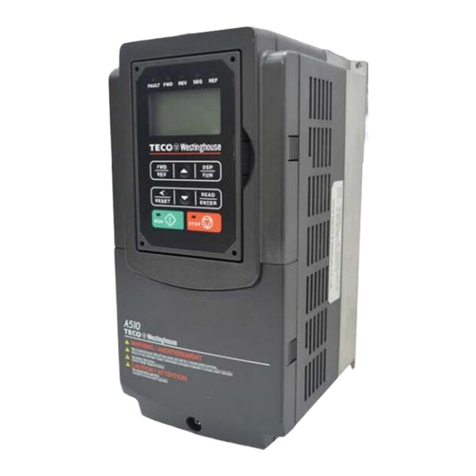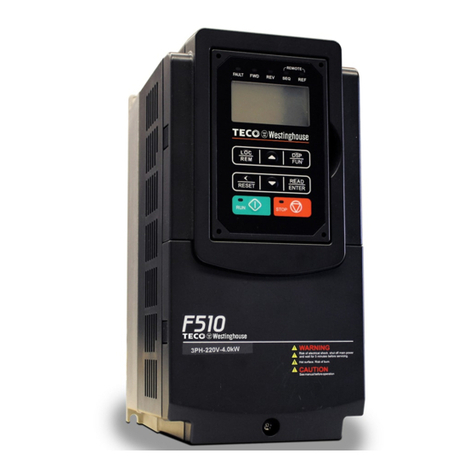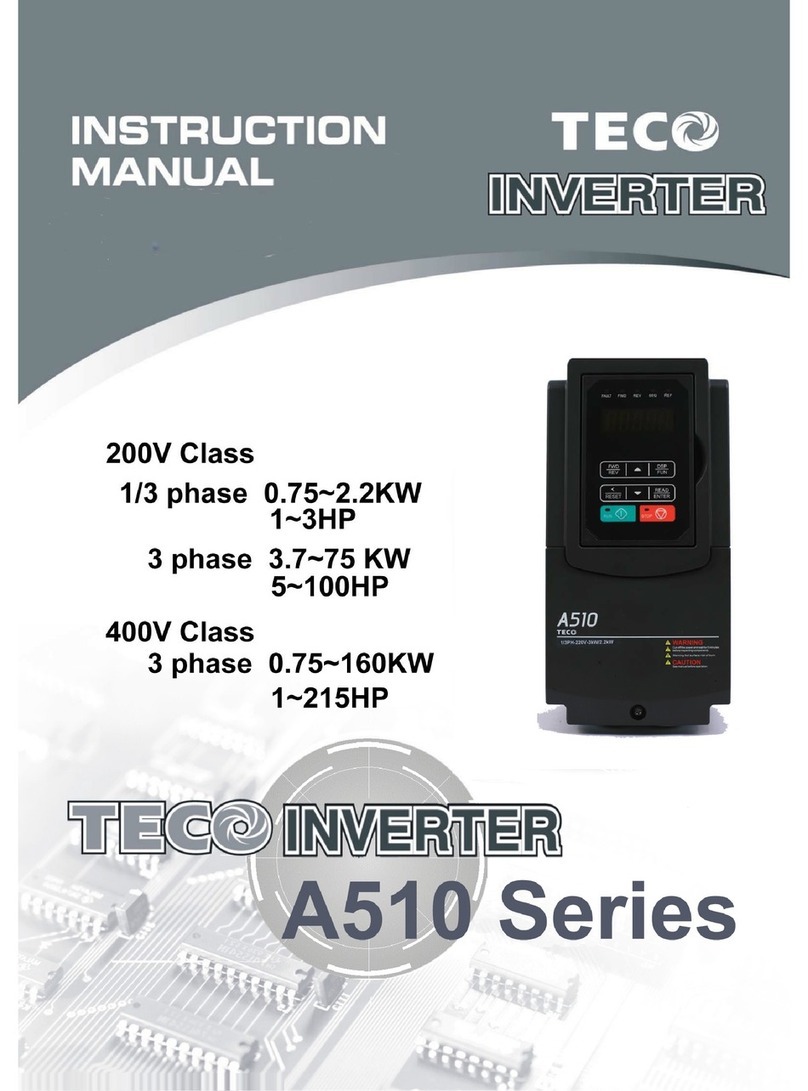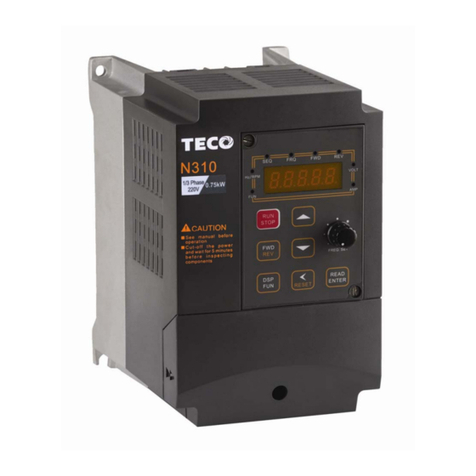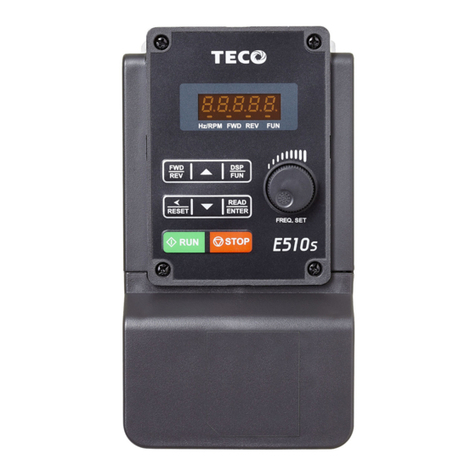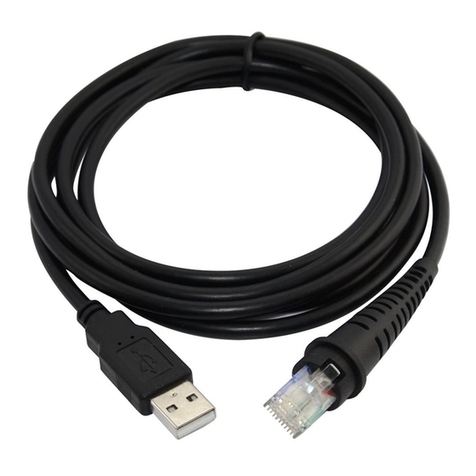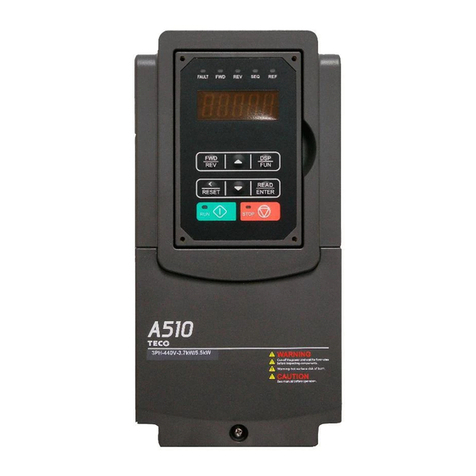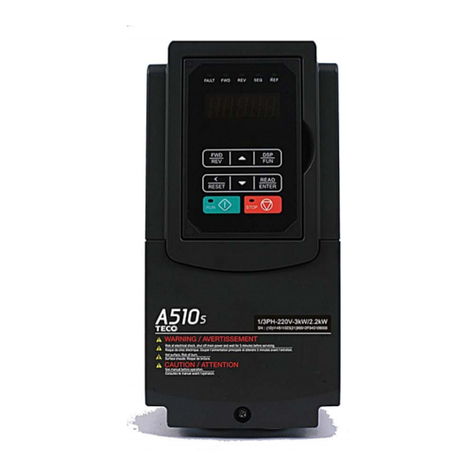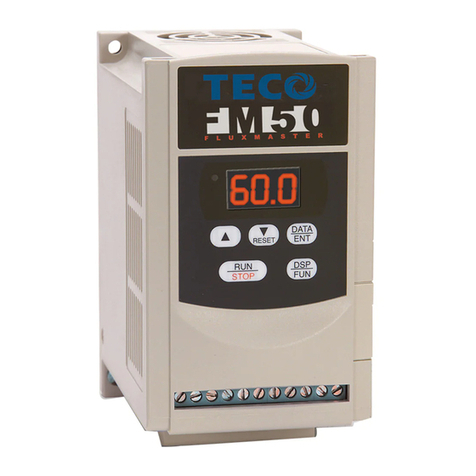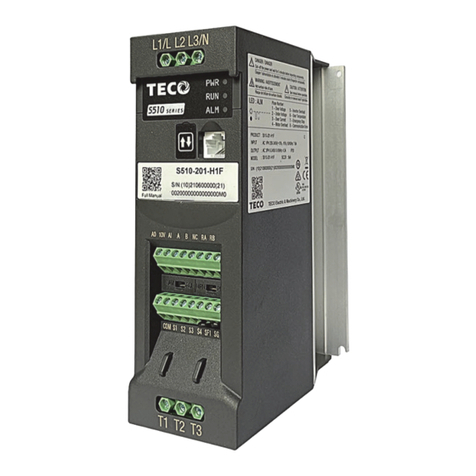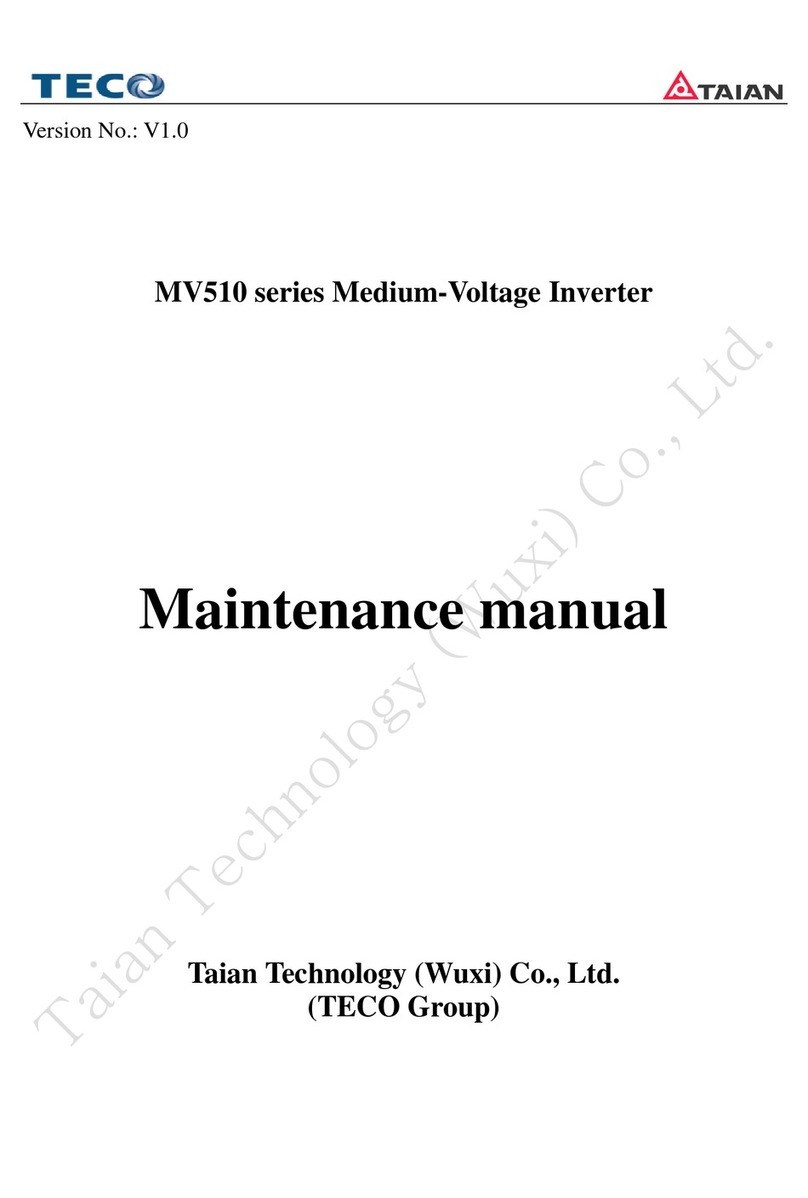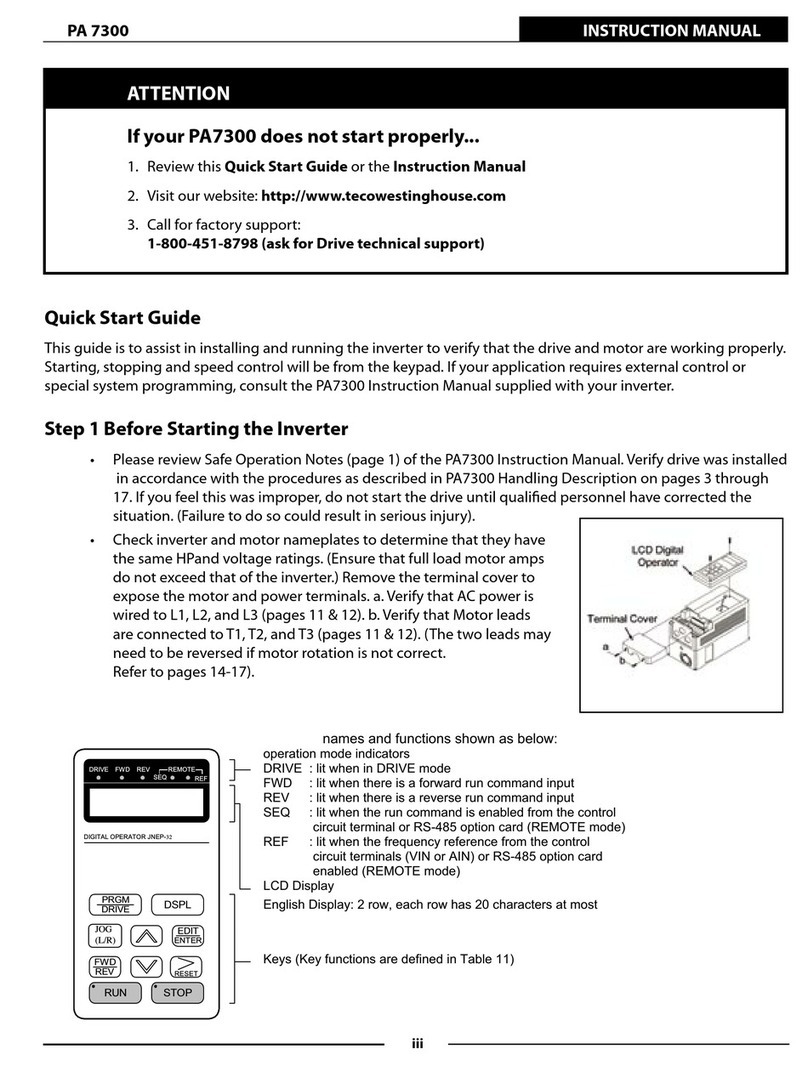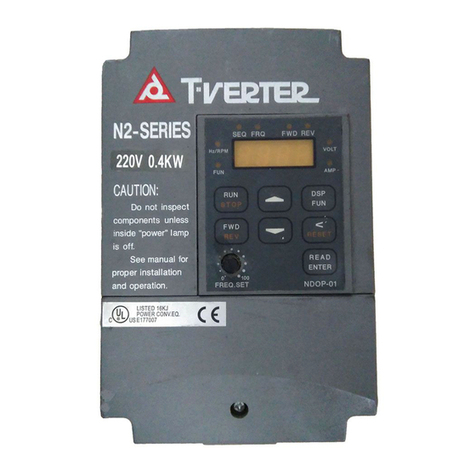
2
Do not connect a braking resistor directly to the DC terminals P (+) and N (-), otherwise fire
may result.
Use wire gauge recommendations and torque specifications. (See Wire Gauge and
Torque Specification in section 3.6)
Never connect input power to the inverter output terminals U/T1, V/T2, W/T3.
Do not connect a contactor or switch in series with the inverter and the motor.
Do not connect a power factor correction capacitor or surge suppressor to the inverter
output.
Ensure the interference generated by the inverter and motor does not affect peripheral
devices.
1.3 Before Operation
Warning
Make sure the inverter capacity matches the parameters 13-00.
Reduce the carrier frequency (parameter 11-01) If the cable from the inverter to the
motor is greater than 80 ft (25m). A high-frequency current can be generated by
stray capacitance between the cables and result in an overcurrent trip of the inverter,
an increase in leakage current, or an inaccurate current readout.
Be sure to install all covers before turning on power. Do not remove any of the covers
while power to the inverter is on, otherwise electric shock may occur.
Do not operate switches with wet hands, otherwise electric shock may result.
Do not touch inverter terminals when energized even if inverter has stopped, otherwise
electric shock may result.
1.4 Parameters Setting
Caution
Do not connect a load to the motor while performing a rotational auto-tune.
Make sure the motor can freely run and there is sufficient space around the motor
when performing a rotational auto-tune.
1.5 Operation
Warning
Be sure to install all covers before turning on power. Do not remove any of the covers
while power to the inverter is on, otherwise electric shock may occur.
Do not connect or disconnect the motor during operation. This will cause the inverter
to trip and may cause damage to the inverter.
Operations may start suddenly if an alarm or fault is reset with a run command active.
Confirm that no run command is active upon resetting the alarm or fault, otherwise
accidents may occur.
Do not operate switches with wet hands, otherwise electric shock may result.
It provides an independent external hardware emergency switch, which emergently
shuts down the inverter output in the case of danger.
If automatic restart after power recovery (parameter 07-00) is enabled, the inverter will
start automatically after power is restored.
Make sure it is safe to operate the inverter and motor before performing a rotational
auto-tune.
Do not touch inverter terminals when energized even if inverter has stopped, otherwise
electric shock may result.
Do not check signals on circuit boards while the inverter is running.
After the power is turned off, the cooling fan may continue to run for some time.
Caution
Do not touch heat-generating components such as heat sinks and braking resistors.

